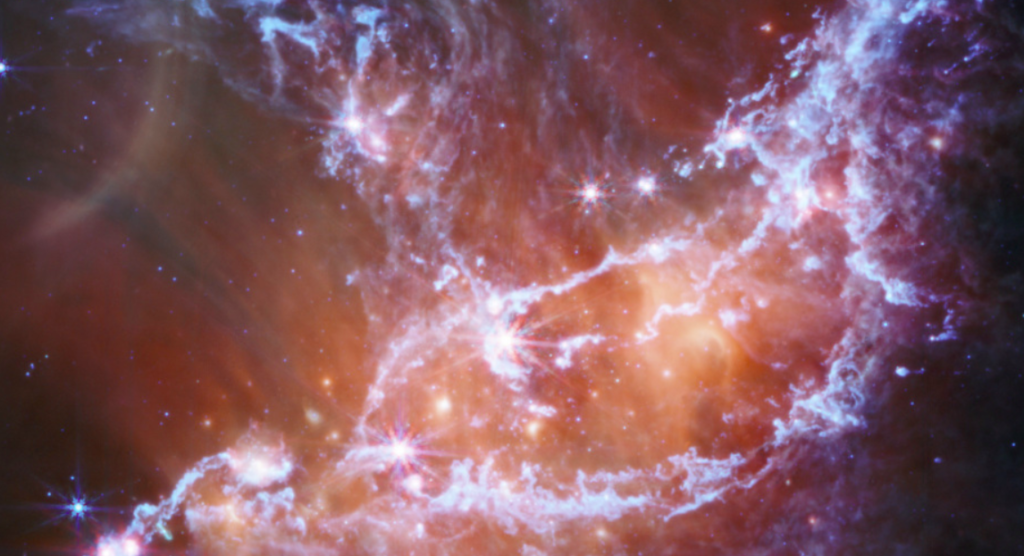
Not only does the James Webb Space Telescope have a large mirror, but it is also the most powerful telescope available to scientists. With the ability to look far into the infrared, Webb’s equipment enable the observatory to see through gas and dust clouds and observe objects that were previously unobservable. Recently, Webb focused on a nearby galaxy’s star-forming area called NGC 346. The magnificent image above and additional information on the complexities of star creation are the end results.
Within the Small Magellanic Cloud, a satellite galaxy circling our own Milky Way, NGC 346 is the greatest stellar nursery. This galaxy is seen in the constellation Tucana and can only be seen with the unaided eye if one is in the southern hemisphere. The Small Magellanic Cloud lacks the heavy metals that are formed in the blazing core of stars, making it more primordial than the Milky Way. While planets do have some of those elements, the amount of dust present also rises.
Because of its small size, scientists think the Small Magellanic Cloud may offer a contemporary counterpart to the historical “cosmic noon.” The universe saw a peak in star formation billions of years ago, but there was also a dearth of heavy metals at this time. Webb’s Mid-Infrared Instrument (MIRI) instrument produced the latest image. The NIRCAM instrument produced the majority of the famous Webb images, but MIRI’s ability to see farther in the infrared makes it the better choice in this case.
Polycyclic aromatic hydrocarbons (PAHs), big ring-shaped molecules, and silicates are the blue streaks seen throughout the photograph. The image’s red glow is dust that has been scorched by NGC 346’s biggest and brightest stars. The image’s brightest areas are concentrated areas of protostars, the majority of which are still covered in layers of primordial dust.
Astronomers discovered more dust in NGC 346 than they had anticipated, according to NASA. They intend to better understand conditions in the Small Magellanic Cloud by merging data from MIRI and NIRCAM, which may or may not support current theories about Cosmic Noon. Considering the greater than anticipated dust concentration, some issues might still need to be resolved.
The James Webb Space Telescope took 20 years to design and build, and it launched in late 2021. It has operated more than flawlessly ever since. NASA estimates that because of how successfully the launch and early maneuvering went, Webb will have enough fuel to function for 20 years as opposed to ten. This means we have a very exciting few years of observations ahead of us.